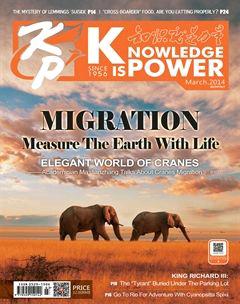Animals’ Unique Skills Of Travelling
By+Mu+Zi
Using Fat As Fuels
Many migratory birds will eat a lot before leaving, storing surplus energy under the skin, and their weight will increase a lot than usual. For example, the mangos weight will increase by one time (about the weight of four paper clips) before migration. For a bird weighs 15 grams, each gram of fat can support the flight of 200 kilometers. Otherwise, there is lot of sugar in fruits, which will turn to fats more easily than insects.
Using Airflow To Help In Flight
During the migration of the blackpoll warblers, they should vibrate their wings for about 4 million times to reach the destination. The warm airflow is the warm air rising from the grounds or the water surfaces, the air flow rises for heat or encountering the obstacles as mountains. While the birds fly along the mountain chains, the warm airflow will help the birds who fly up spirally to save strength. As the warm airflow becomes cold and stops rising up, the birds can rapidly rush to the next warm airflow just by vibrating the wings, then they can use the next “elevator” to continuously fly up and forward.
The Daytime Way And The Night Way, Not Usual Ways
You must have seen a large group of birds flying above the sky, then have you ever seen a shadowy figure flying past the moon? You are right, those are the birds fly in the night.
Relatively, most migratory birds, especially the small jacamars, millet birds, wading birds and ducks eat and rest in the daytime, fly in the night. Therefore there is one way to calculate the amount of migratory birds, which is to count the shadows of bird groups pass the moon ( in the migration season, within one hour, people observing the moon could see more than 200 kinds of birds). These birds fly at night in order to avoid the natural enemies they might meet in the daytime, in this way they can miss the chance of meeting them.

